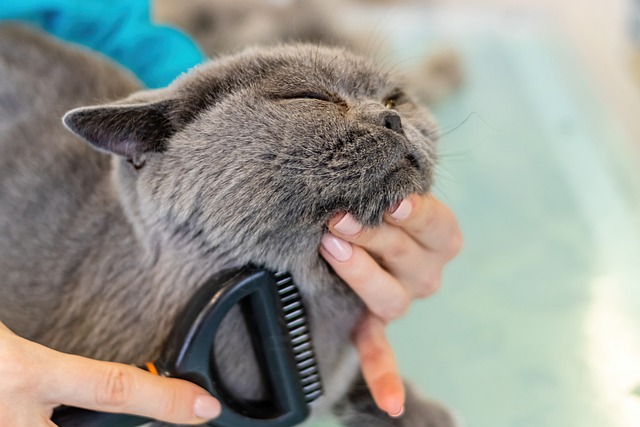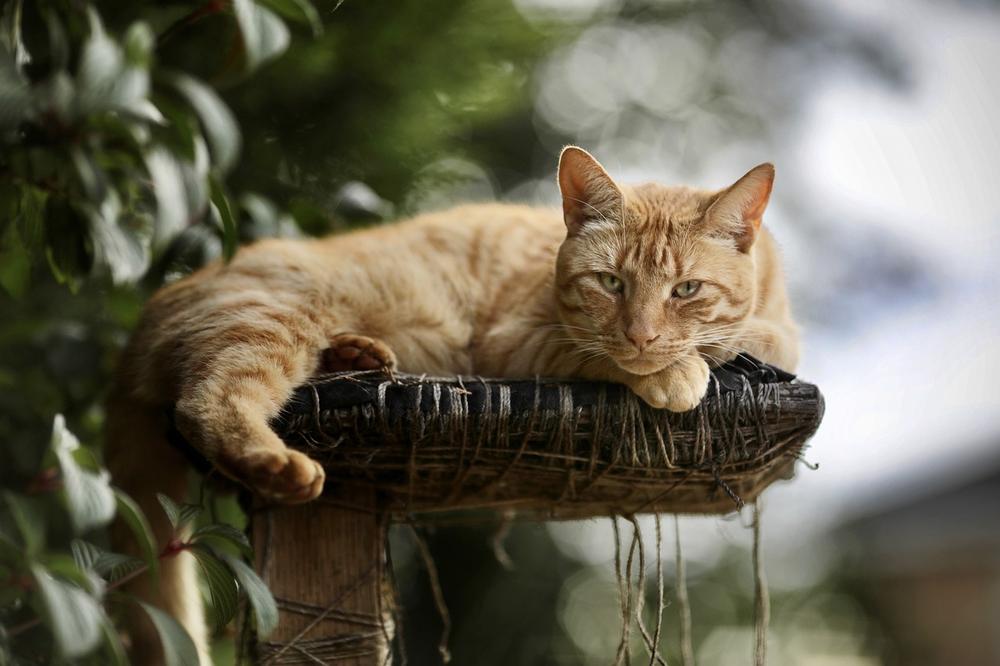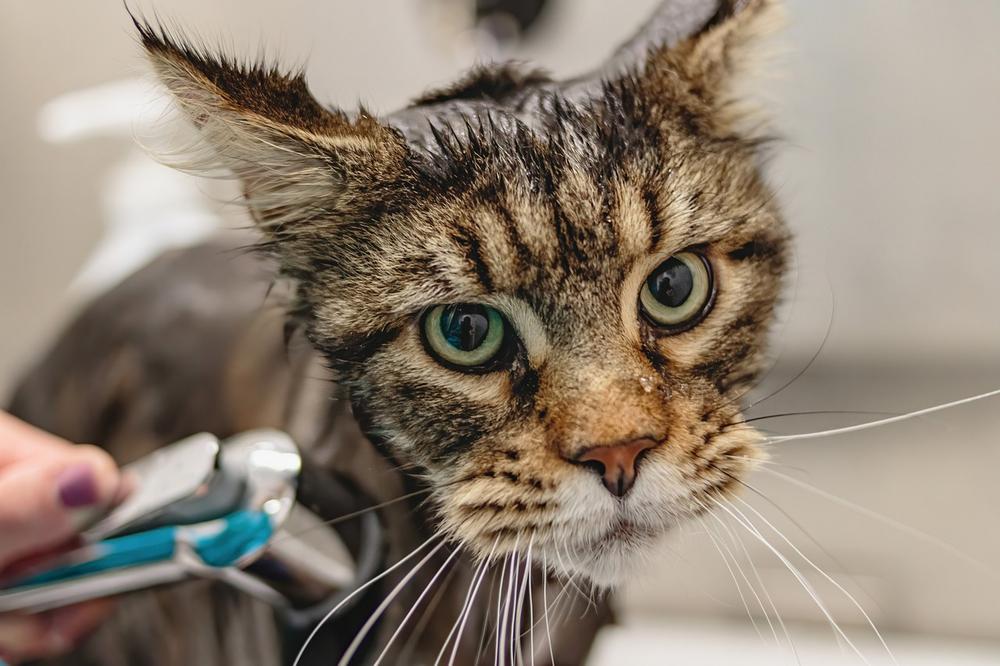How to Groom a Cat at Home Like a Pro: The Ultimate Guide

So, you want to groom your cat at home.
No more hassle at the groomer's, no more pricey bills.
But what happens if you mess up? 😱
What if your furry friend ends up looking like a hot mess?
Don't panic, because I've got the solution.
Let's dive in!
Can I Groom My Cat at Home?
You know, grooming your cat at home is a fantastic way to really connect with your furry buddy. It's also easy on the wallet and causes less stress for your feline friend.

Let me give you some advice on how to successfully groom your cat at home:
- Make sure to create a relaxed atmosphere.
- Opt for grooming tools that are gentle and specifically designed for pets.
- Giving your cat regular brushing will help prevent tangles and those pesky hairballs.
- Trim their nails so they don't accidentally scratch or ruin your furniture.
- Be thorough in checking their ears and teeth for any signs of infection or decay.
- Oh, and don't forget to lavishly reward your cat with treats and praise during the entire grooming process.
- Remember, patience is key! Take breaks if necessary.
- Never try to force your cat into an uncomfortable position they don't like.
- In case you run into any challenges, don't hesitate to reach out to your vet for guidance.
- Most importantly, cherish this bonding experience!
Grooming your cat at home not only promotes their well-being but also strengthens the bond you share.
So go on, why not give it a shot? 😺
Why Groom a Cat?
To keep your cat happy and healthy, you need to groom them regularly.
First off, let's talk about hairballs.
Grooming helps prevent them by getting rid of dirt, dead hair, and skin flakes from their coat.
It also keeps the cat's skin healthy and in good shape.
When you groom your cat, you're able to check for any skin abnormalities, especially in young, old, sick, or stressed-out cats.
If you notice anything weird, get them to a vet right away.
But grooming goes beyond just avoiding hairballs and taking care of the skin.
It also helps kittens with going to the bathroom, makes them feel relaxed and content, and even gets rid of dirt, debris, and parasites if they hang out outdoors.
On top of all that, grooming strengthens the bond between you and your fuzzy companion.
Brushing, combing, and bath time becomes a special moment of connection and affection.
And don't forget, regular brushing prevents tangled hair and those pesky hairballs.
Through grooming, you might find sensitive spots or lumps on your cat's body early on, making it easier to detect and treat any issues.
However, in essence cat health involves more than just grooming.
You need to control fleas, worms, and parasites throughout the year, as well as provide them with a proper diet.
So, grab that brush and show your kitty some love!
No beating around the bush: Grooming your cat at home is crucial for their well-being. But, there's more! Further down the blog post, I'll share essential information about your cat's self-grooming ritual. Keep reading to learn all about it!
But now that you know why grooming your cat is crucial for their well-being, let's dive into the essential techniques and tools you'll need to become a pro at maintaining your feline friend's fabulous fur!
From gentle brushing to thorough examinations, there's so much to learn - and trust me, once you master these skills, you'll feel like a true cat whisperer.
So, are you ready to unlock the secrets of purrfect grooming?
Let's get started!
How to Groom a Cat
Understanding the Proper Brushing Techniques
When it comes to grooming your cat, it's important that you know how to brush them properly based on their coat type.
If your cat has short fur, use a slicker brush for best results.
For cats with long fur, go for a wide-toothed comb instead. When brushing, take your time and be patient, using gentle, short strokes.
Other Aspects of Cat Grooming
Grooming your cat involves more than just brushing and bathing.
You should also pay attention to other aspects, like keeping their ears clean.
To do this, gently fold back their ears and check for any dirt or wax that needs to be removed. Remember to always brush in the direction of their fur during the grooming session. This helps prevent discomfort and minimize tangles.

While grooming, it's also a good idea to keep an eye out for ticks, lumps, wounds, or any other issues that may require veterinary attention.
Seeking Professional Help and Dedication
For more extensive cuts, it's advisable to seek professional help from a groomer who has the experience and knowledge to ensure a positive outcome.
However, for minor fur trimming, you can safely do it at home using scissors. Just ensure to practice caution.
Bear in mind that mastering the art of cat grooming takes practice and dedication, so don't get frustrated if things don't go perfectly at first. The more you groom your cat, the better both you and your cat will become accustomed to the process.
So stick with it, and soon enough, you'll become a pro cat groomer.
And now, let's delve deeper into the importance of observing and appreciating your cat's self-grooming habits.
I must say, understanding this ritual not only provides valuable insights into their all in all wellbeing but also plays a crucial role in their health and happiness...
Your Cat’s Self-Grooming Ritual
Here are 11 key aspects to understand about your cat's self-grooming ritual:
- Observe and appreciate your cat's grooming habits.
- Their grooming ritual indicates their overall well-being.
- Regularly check their paws for injuries or wounds.
- Provide chew toys for dental health.
- Monitor their eyes for signs of problems.
- Cats groom themselves using their tongue's papillae.
- They remove debris, excess hair, and parasites through licking.
- Allogrooming involves cats cleaning each other.
- Autogrooming refers to self-cleaning.
- Notice signs of enjoyment like purring, kneading, and relaxation.
- Grooming occupies a significant portion of their awake time.
You must remember that grooming is a soothing ritual for cats.
Their tongues play a part in removing loose hair and spreading natural oils over their coat.
Furthermore, regular tooth brushing with pet-specific toothpaste promotes good dental health.
While most cats manage their grooming well, some breeds may require extra assistance to maintain the health of their coat.
I highly recommend exploring the fascinating world of cats' self-grooming habits and, if you're curious about a specific aspect of their uniqueness, like why some cats have eyebrow whiskers while others don't, you will find answers in my blog post about Cats Eyebrow Whiskers.
Discover the surprising factors that contribute to these adorable features and satisfy your curiosity.
How to Help a Cat Become Comfortable With Grooming
Is your cat causing you trouble when it comes to grooming?

Don't worry, lots of people have the same problem.
Here's what you can do to help your cat get comfortable with grooming:
- Take it slow with the grooming tools. Let your cat sniff and check them out without any pressure. Slowly increase their exposure over time.
- Give your cat rewards for each grooming session. Reward them with treats or praise when they behave well during grooming.
- Keep an eye on their ears. Check for wax, debris, and signs of infection. If needed, gently clean their ears with a cat-friendly cleaning solution.
- Make sure your cat is relaxed and happy before you start grooming. Let them approach grooming in their own way and make sure they're calm and content.
- Be careful when trimming their nails. Only cut the tips so you don't damage furniture or rugs. Take breaks if needed and never force your cat into nail trimming.
- Be gentle with sensitive areas like their belly and tail. Brush those areas carefully to avoid discomfort.
- Start brushing by focusing on their face first. If they're comfortable, move on to other areas of their body gradually.
- Introduce grooming routines when your cat is still a kitten. This will help them feel less stressed during vet visits and make grooming more familiar.
- Get your cat used to dental care from an early age. Gradually introduce them to toothbrushing and consider using food additives or natural chews for their dental health.
Ensure a pleasant and worry-free grooming session for your cherished feline companion by adhering to these suggestions. It is crucial to maintain both patience and uniformity throughout the process!
Signs Your Cat Is Not Happy Being Groomed
When you're grooming your cat, you should keep an eye out for signs that they're not happy with what you're doing. Here are some cues you should look for:
- If your cat is scratching or biting excessively while being groomed, it could be a sign that they're in pain or discomfort.
- A tail swishing or twitching can indicate that your cat is irritated or frustrated, so it's best to take a break if you see this behavior.
- When your cat has dilated pupils or flattened ears, it means they're feeling anxious or stressed and need a break from grooming.
- If your cat hides or tries to escape while you're grooming them, it means they're overwhelmed or scared, so you need to stop and give them some space.
- Loud vocalizations like hissing, growling, or meowing are clear signs of distress and should be dealt with immediately. 😿
Every cat is different, so pay attention to how your individual cat reacts to grooming.
Nobody likes being groomed, but watching for these signs will help ensure that your cat stays healthy and comfortable throughout the process.
If you consistently notice signs of distress, it might be a good idea to consult a professional groomer or veterinarian for assistance.
Proper grooming is essential for keeping your cat both healthy and comfy, so make sure to pay close attention to their needs and make any necessary adjustments.
Which Cat Grooming Brushes Are Best?
When it comes to grooming your cat at home, there are a bunch of different brushes you can use.
But which ones work best for your furry friend?
Let me break it down for you.
First off, we have the curved/slanted brushes with thin hooks.
Perfect for medium to long-haired cats, they're designed to detangle knots and keep your cat's fur looking sleek and shiny.
However, if you've got a short-haired cat, these brushes might not be as effective.
Next up, we've got fine-toothed and soft bristle brushes.
These babies are great for short to medium-haired cats.
They gently remove loose fur and add that finishing touch to your cat's coat.
And the bonus?
Your cat will love the soothing feeling of getting brushed.
If you're new to grooming or just want something easy to use, consider hand mitts with rubber toothed sides.
They're perfect for all types of coats and won't irritate your cat's skin.
You can even give them a nice massage during the grooming sesh.
Combs with different pin lengths are another option. They're ideal for removing knots and collecting loose fur.
If your cat is really tangled up, these combs will definitely come in handy. There are also combs with the same length pins that untangle knots without causing any discomfort for your cat.
Brushes with pins are great because they prevent matting and get rid of knots.
Every cat owner needs one of these in their arsenal.
And don't forget about rubber brushes. Not only do they give your cat a relaxing massage, but they also distribute natural oils through their coat.
For short-haired cats, slicker brushes and bristle brushes are where it's at.
These will keep their fur looking fabulous and prevent tangles from forming. On the other hand, if you've got a medium or long-haired cat, start with moult combs or pin brushes before giving them a finishing touch.
Regularly brushing your cat's fur is super vital to avoid tangles and mats.
Long-haired cats should get brushed daily to keep their coats healthy and shiny.
Short-haired cats can usually get away with a grooming session once a week.
Now that you've got the lowdown on all the different brushes, it's time to pamper your cat!
Grab the brush of your choice and give your furry friend the love they deserve.
And now that we've covered the best types of brushes for grooming your cat, let me share some tips on dealing with mats...
Bathing and De-Matting Your Cat
When it comes to bathing and de-matting your cat, here are 11 easy steps you can follow:
- Share tips and strategies for dealing with mats.
- Use specialized detangling sprays or powders.
- Address dirty or sticky fur with a bath if necessary.
- Ensure you have the right products and equipment on hand.
- Follow a specific routine for bathing your cat at home.
- Gently tease apart any matted fur during the bath.
- Consider carefully snipping excessively matted fur.
- Seek professional help for severe matting cases.
- Gather necessary supplies before starting the bath.
- Use lukewarm water and pet-friendly shampoo.
- Thoroughly rinse your cat and gently dry them with towels.
But that's not all!
For preventing mats and tangles, regular grooming is key.

Even short-haired cats can benefit from weekly or bi-weekly brushing.
And guess what?
Spot cleaning using grooming wipes or waterless shampoo is a great alternative to full baths.
With these tips, your cat will be clean, happy, and mat-free!
Conclusion
- Regular grooming is important for overall health and hygiene.
- Grooming can indicate the cat's skin and overall health.
- Grooming stimulates the skin and aids kittens with elimination.
- Outdoor cats may require more grooming to remove dirt and parasites.
- Bonding between owners and cats can occur during grooming.
- Regular grooming prevents matted hair, hairballs, and promotes a healthy coat.
- Monitoring a cat's eyes, paws, and teeth is crucial for their well-being.
- Grooming should be done in a relaxed state and with the cat's consent.
- Watch for signs of discomfort or health issues during grooming.
- Use appropriate grooming tools and supplies for each cat's coat type.
- Bathing may be necessary but spot cleaning is an alternative option.
And that wraps up today's article.
You've made it to the end of my blog post, so I wanted to ask you... Did you enjoy it? I put a ton of effort into creating comprehensive and helpful blog posts. It does take me quite a bit of time, but I genuinely enjoy doing it. That's why I would truly appreciate it if you could click on any of the social sharing icons to share this post with others. Thank you so much!
Talk soon,
-Sarah Davis